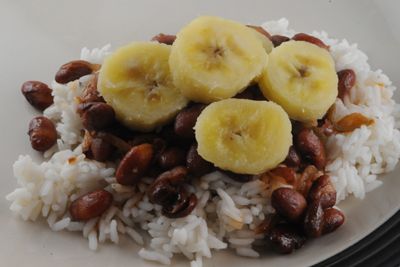Introduction: Understanding Congolese Cuisine
Congolese cuisine is a reflection of the country’s rich cultural diversity and history. Located in the heart of Africa, the Democratic Republic of Congo has over 250 ethnic groups with distinct cooking styles and ingredients. However, cassava and plantains are two of the most commonly used ingredients in Congolese cuisine. These versatile and nutritious staples are used in a wide range of dishes, from stews and soups to snacks and desserts.
Cassava: A Staple Food in Congolese Dishes
Cassava is a starchy root vegetable that is native to South America but is now widely cultivated in Africa. It is a staple food in Congolese cuisine, and its versatility makes it a popular ingredient in many dishes. Cassava can be boiled, fried, mashed, or fermented to make a range of dishes, including makemba (cassava porridge), chikwange (fermented cassava), and saka saka (cassava leaves cooked with peanuts). Cassava is also used to make fufu, a popular side dish that is served with stews and soups in many African countries.
Plantains: A Versatile Ingredient in Congolese Cooking
Plantains are a type of banana that is commonly used in African cuisine. Unlike sweet bananas, plantains are starchy and are usually cooked before eating. They are a versatile ingredient in Congolese cooking and can be used in both savory and sweet dishes. Plantains can be boiled, fried, or roasted to make dishes like matoke (plantain stew) and plantain fritters. They can also be mashed and used as a base for desserts like plantain pudding.
Popular Congolese Dishes Featuring Cassava
Cassava is a key ingredient in many popular Congolese dishes. One of the most famous is kwanga, a fermented cassava cake that is cooked in banana leaves. Kwanga is a staple food in the Kasai region of Congo and is often served with stews and sauces. Another popular cassava dish is sombe, a stew made with cassava leaves, onions, tomatoes, and peanuts.
Popular Congolese Dishes Featuring Plantains
Plantains are used in many popular Congolese dishes. One of the most famous is matoke, a stew made with plantains, meat, and vegetables. Matoke is a staple food in the eastern part of Congo and is often served with beans or rice. Another popular plantain dish is dodo, fried plantains that are often served as a snack or side dish.
Health Benefits of Cassava and Plantains
Cassava and plantains are both nutritious ingredients that provide a range of health benefits. Cassava is a good source of carbohydrates, fiber, and vitamins C and B6. It is also gluten-free, making it a good alternative for people with celiac disease or gluten intolerance. Plantains are a good source of potassium, fiber, and vitamin C. They are also low in fat and calories, making them a healthy alternative to other starchy foods.
Cultural Significance of Cassava and Plantains in Congolese Cuisine
Cassava and plantains have a significant cultural significance in Congolese cuisine. They are a symbol of tradition, resilience, and community. For many Congolese people, cassava and plantains are not just a source of food but also a way to connect with their heritage and ancestors. They are often used in traditional rituals and ceremonies, such as weddings, funerals, and harvest festivals.
Conclusion: Enjoying the Rich Flavors of Congolese Cuisine
Cassava and plantains are two of the most versatile and nutritious ingredients in Congolese cuisine. They are used in a wide range of dishes, from stews and soups to snacks and desserts. Whether you are a seasoned foodie or a curious traveler, trying Congolese cuisine is a must-do experience. So, next time you are in Congo or a Congolese restaurant, be sure to try dishes featuring cassava and plantains for a delicious and authentic taste of Congolese culture.

